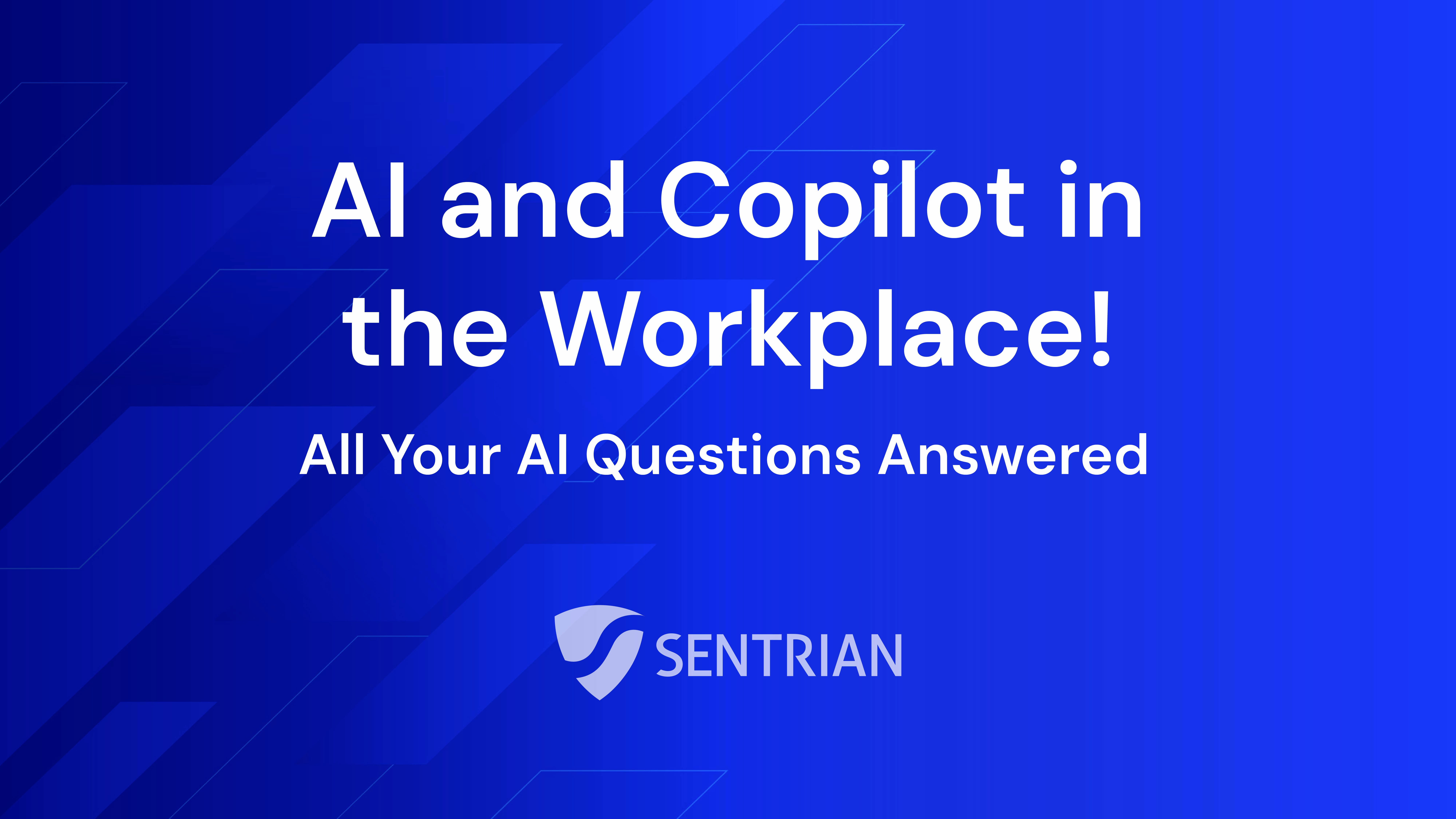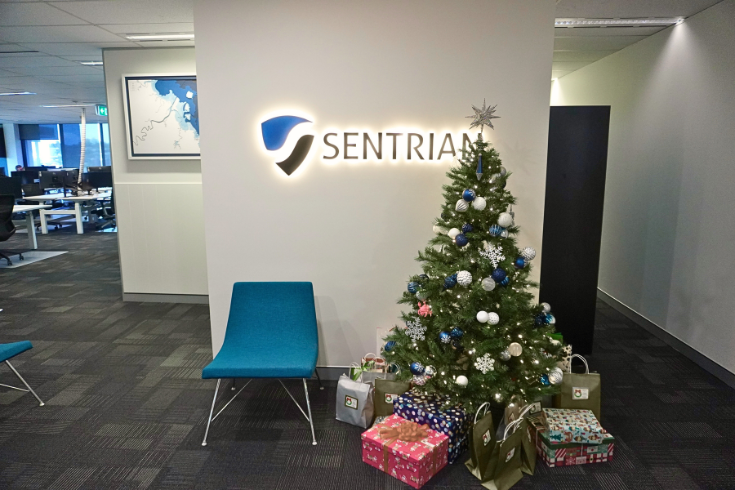Has ‘AI Hype’ Exposed Gaps in Your Data Governance?
It seems that every second new software update lately claims to be “AI enabled”. But while most of the buzz focuses on productivity, the risk discipline is starting to bite. Australian regulators are not just paying attention, they’re pulling on their gloves.
The speed of AI adoption is outpacing sensible risk controls, and with data risks now reaching from boardrooms to branch offices, Australian businesses are on the cusp of significant change. Cue: the government’s proposed mandatory AI guardrails. Let's discuss, what are they, why do they matter, and what does this mean for your average SMB?
Why Is AI Data Governance Suddenly a Hot Topic?
Let’s start with the framing. Today, “data-driven” means handling a lot more than sales figures and customer emails. Many digital transformation projects, and nearly all corporate AI deployments, rely on vast amounts of sensitive, sometimes personally identifiable, information. Needed for everything from logistics predictions to health insights, this data brings opportunity and a laundry list of new risks.
What once fitted neatly into the Privacy Act and Australian Privacy Principles (APPs) is now bursting at the seams:
- Cross-functional risks (legal, technical, operational, PR)
- Supply chain exposures (who’s handling your data, and how?)
- Rushed AI adoption without proper security controls (think: inadvertently exposing your customer’s confidential data via a chatbot)
And it’s not just theory. Australia’s 2024 Privacy Bill has already begun tightening obligations, and upcoming reforms will only raise the bar, especially for small businesses currently used to flying below the radar.
Takeaway: The legal and regulatory tide is turning fast. If you think “it won’t affect us”, history is not on your side.
What Are the Proposed Mandatory AI Guardrails?
In September 2024, the Department of Industry, Science and Resources released two important documents: proposed mandatory AI guardrails, and a voluntary AI Safety Standard. While much of this is still in flux, the direction is clear, and it cuts across every sector.
The Guardrails: Where Did They Come from, and Why?
These guardrails are an explicit attempt to patch the yawning gaps in Australia’s current legal and regulatory frameworks. Inspired by international “responsible AI” initiatives (think Europe’s AI Act, UK’s National AI Strategy) and domestic pain points, they are designed to bring order to the chaos. Their core purpose? To ensure that AI deployments don’t take short cuts around privacy, accountability, and consumer protection.
The Big Ten
For AI considered “high-risk”, the draft guardrails require organisations to:
- Establish Accountability: Appoint responsible governance, build capability and align to compliance.
- Risk Management: Systematically identify and mitigate AI risks.
- Data Governance: Manage data quality and data lineage (i.e., know your data’s origins).
- Testing: Rigorously test AI models for reliability and monitor performance after launch.
- Human Oversight: Ensure meaningful, documented human control over AI decisions.
- User Transparency: Tell users when they’re interacting with or are affected by AI.
- Challenge Mechanism: Let people query or appeal high-stakes AI decisions.
- Supply Chain Transparency: Keep your AI/data partners honest (and share relevant risk info).
- Record Keeping: Maintain logs sufficient for external scrutiny.
- Conformity Assessment: Regularly prove (and certify, if needed) you’re actually following the rules.
The intended effect: to move governance from a vague aspiration (“We’re doing AI responsibly!”) to a set of measurable, auditable requirements. The guidance applies most heavily to “high risk” use cases, particularly those where the nature, context, or impacts of AI are significant and could be reasonably foreseen.
What Does This Mean for SMBs?
Now, the million-dollar question (or, if you’re unlucky, the six-figure fine): how will this land for small and mid-size businesses?
What Defines 'High Risk'?
Although not explicitly defined in the Voluntary AI Safety Standard, the more formal Proposals Paper outlines the following broad principles that regard must be given to:
- The risk of adverse impacts to an individual’s rights recognised in Australian human rights law without justification, in addition to Australia’s international human rights law obligations.
- The risk of adverse impacts to an individual’s physical or mental health or safety.
- The risk of adverse legal effects, defamation or similarly significant effects on an individual.
- The risk of adverse impacts to groups of individuals or collective rights of cultural groups.
- The risk of adverse impacts to the broader Australian economy, society, environment and rule of law.
- The severity and extent of those adverse impacts outlined in principles previous principles.
Although the Proposals Paper states that the "proposed approach provides flexibility to prevent inadvertently catching low risk application in a list of high risk settings', it would seem that the broadly written principles could be applied in ways that could capture many common use cases of AI implemented in small and medium businesses.
Key Issues and Potential Impacts
- Compliance Overhead: Many SMBs have grown used to being exempt from the most onerous privacy obligations (i.e., if revenue under $3 million). However, upcoming reforms appear to seek to dissolve this small business exemption, bringing thousands of previously unaffected companies into the net.
- Translation: You’ll have less wriggle room around privacy and data governance, and far less room for “DIY” approaches.
- Resourcing, Capability, and Cost: Unlike the big end of town, most midsize firms don’t have a Chief AI Officer or in house compliance team. Building processes for risk management, testing, ongoing monitoring, and user feedback will mean upskilling or buying in expertise.
- This is not a back-office tick box exercise. Board and management accountability is baked in.
- Third-Party Exposure: Most SMBs rely on cloud software, services, and supply chains that may already be using AI. The new guardrails make you responsible not just for your own environment, but for how your partners use (or misuse) AI with your data.
- Expect a surge in legalese flying around supply contracts and privacy notices.
- Competitive Pressure: There’s upside here too, transparency and robust AI governance will become a sales point, especially if you’re dealing with larger clients or regulated sectors.
The Pragmatic Response
- Start Mapping AI Use: Even a rough inventory will do, what tools, what use cases, what data?
- Review Your Data Governance: Assess where sensitive or regulated data interacts with AI, and how it’s controlled.
- Brush Up on Privacy and Consent: Ensure you’re clear on when and how personal information gets processed (and why).
- Upskill Leaders and Staff: You don’t need everyone to be a data scientist, but business decision makers need to know the broad brush of these obligations.
- Get Legal Advice: Especially if you’re on the cusp of a new AI implementation, or if existing projects could be caught by “high risk” definitions.
- Talk to your IT team or IT provider about what measures can be implemented to strengthen your data governance stance.
Takeaway: This isn’t “future proofing”, it’s next financial year risk management. Good data governance is now a foundational business discipline, not an optional extra.
The Price of Admission
The mandatory AI guardrails are more than just another regulatory hoop. They mark a fundamental shift in how Australian organisations are expected to approach data, automation, and risk. Low cost, “she’ll be right” approaches are unlikely to withstand either regulator or marketplace scrutiny for much longer.
For SMBs, the message is clear: get your data house in order. Build policy, process, culture and robust IT systems now, or risk backpedalling when the guardrails become law.
Next Steps:
- Audit your AI and data use now, ignorance will not be a defence.
- Begin to implement required IT data governance systems.
- Watch for consultation periods and regulator guidance.
- Even before the ink is dry, begin aligning your governance to the ten guardrails, if nothing else, you’ll look ahead of the curve to your clients, partners, and (inevitably) the OAIC.
Soon enough, “How well do you govern your AI?” will be just as common a question as “Where’s your privacy policy?” The time to shape up is now. Get in touch with Sentrian to have a conversation about Data Governance and AI.







